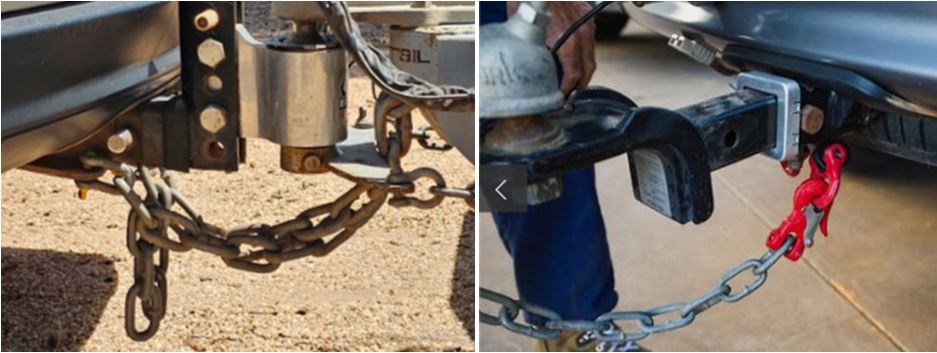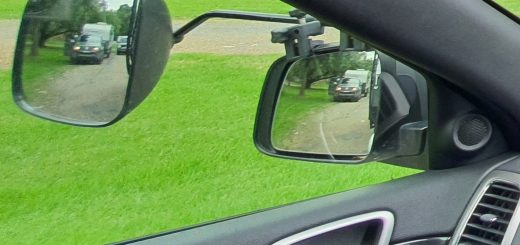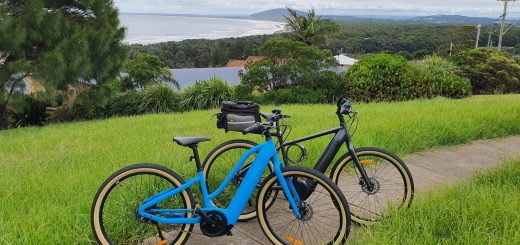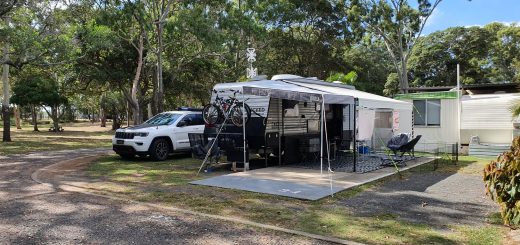Towing – Shackles or hooks?
One of the biggest topics around the campfire at a caravan park is often around can you use hooks to connect your towing chains. I am going to stick my neck out onto the chopping block and add my 2 cents into the debate!
And please feel free to share this post around to get the message out there – I have links top and bottom of the article to make it easier for you.

I have been searching long and hard on this one for a long time, trying to decipher the legislation and it keeps referring back to the Australian Standards, which we as mere end users aren’t privy to unless we want to cough up some money to pay for them.
Well lucky for all of us, an Automotive Journalist by the name of Robert Pepper has done all the hard work for us and put an end to the debate once and for all. Spoiler alert – yes you can if they meet the requirements. There is no shock loading, no difference between vertical and horizontal loads etc, all the reasons that those against hooks say they can’t be used. None of those reasons actually exist exist in legislation or Australian Standards I am sorry to say.
I will break down the pertinent facts here, the information I am relaying is partly gleaned from a long time searching the rules, the rest from Robert’s excellent half hour video on the topic, embedded below and I strongly recommend watching if the topic interests you.
The basic requirements of a device to connect the safety chains to the tow vehicle for up to 3.5t ATM that I eluded to above, is the connecting device must have a Breaking Strain of greater than 1.5 x the ATM of the item being towed, and only ONE connecting device per chain. So let’s look at how this applies to Hooks and Shackles. The laws do state ‘like’ a shackle, but do not state must be a shackle. This wording means they are using shackles as an example of a device to connect the chains, not the only device that can.
First off we need to work out what the Breaking Strain of the connecting device needs to be. For towing of up to 3.5t (eg trailers and caravans etc.), the Breaking Strain needs to be minimum 1.5 x the ATM of the item being towed. So a 3,000kg ATM caravan needs a chain connecting device with a minimum 4.5 tonne Breaking Strain. A shackle rated to AS 2741 has a breaking strain of 6 x its WLL (Working Load Limit), and a hook rated to the same Standard has a breaking strain of 4 x its WLL. Rated shackles are tested and rated according to AS2321 Short Link Chain for Lifting Purposes. (note of interest – testing is only for lifting purposes)
This means a Shackle rated at 1t WLL has a 6t breaking strain (1.5t WLL = 9t breaking strain), well in excess of the required 4.5t for the 3t caravan. However, a hook with a 1t WLL is only 4t breaking strain, falling short of the require 4.5t. If you don’t want to rely on the advertising blurbs to ensure you are legal, you may need to do some calculations!
Stepping up a level, 3.5t ATM Caravan (the max towing capacity of many larger vehicles), we need a minimum 5.25t breaking strain device, so again our 1t WLL rated shackles are good to go. For a hook, it would need to be greater than 1.3125t WLL (5.25/4). The recently released Mawby Hooks from DIX Engineering Australia are rated to “3.5t towing capacity”*, but they have not listed their WLL or Breaking strain, but have listed them as tested to meet “Australian Standard AS 4177.4 – 2004 (Caravan and Light Trailer Towing Components – Safety Chains to 3,500kg capacity)”. As this standard refers back to AS2741 then we can reasonably safely assume they are in excess of the required 1.3125t WLL.
* NOTE: The Mawby Hook is listed in the advertising as “currently rated to 3.5t” for towing, however over 2.5t requires 13mm chains and the Hook design will only fit the 10mm chains designed for up to 2.5t trailers, which limits the hook to a maximum of 2.5t ATM by design, not by the hook loading limits. DIX Engineering have advised they will be releasing a hook compatible with 13mm chains sometime in 2024. If you look closely at the picture up th top right of the hook, you can see the 10mm chain doesn’t leave a lot of room.
Above I also mentioned only one connecting device per chain – that is one hook or one shackle, multiples per chain are not allowed (2 shackles or a hook and a shackle for example are not allowed). However a Hammerlock device is not considered a connecting device as it’s mostly a permanent fitting and can be used in addition to a hook or shackle (they specifically mention Hammerlocks as being an acceptable method of attaching the chain to the trailer drawbar plus a shackle to attach to the car). I have seen several hooks attached by a shackle – this is considered 2 connecting devices and unfortunately is not allowed.
Personal opinion? Having those large yellow hooks hanging down from the rear of your vehicle looks like dogs balls. Sorry to say. The red Mawby Hook design (picture at top of page) with the smaller hooks attached to the chain and then a Hammerlock on the tow-bar does look much better, but is still limited to 2.5t by the maximum chain size that will fit. After over 3 years on the road full time, the 10 to 20 seconds to connect or disconnect the D-Shackles we use seems very minor compared to the $130 a pair for the Mawby hooks! And I am sure the larger ones suitable for 13mm chains will be more expensive again. That said we have an SUV style vehicle (the Grand Cherokee) and the connection point for the shackles is readily accessible. If you had a Ute with a tray that over hangs the tow-bar that was more difficult to access then the hooks might work a lot better.
I hope that brief break down makes sense, below is the 30 minute video from Robert if you would like to see his full investigation of the Legislation, the Australian Design Rules and the Australian Standards to determine that hooks are in fact, not illegal. Don’t forget to share this around to get the message out there!





Recent Comments